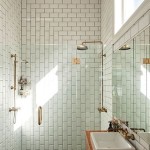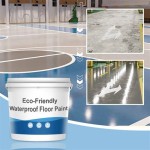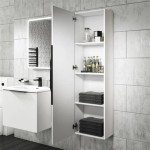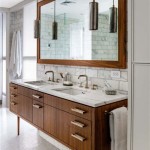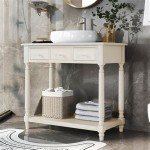How To Install Shiplap In a Bathroom
Shiplap, characterized by its interlocking rabbeted edges, has become a popular choice for adding visual interest and texture to interior spaces. Its versatility allows it to complement various design styles, from rustic farmhouse to modern coastal. While shiplap can enhance almost any room in a home, its application in bathrooms presents particular considerations regarding moisture resistance and proper installation techniques. This article provides a comprehensive guide on how to successfully install shiplap in a bathroom, addressing these specific challenges and ensuring a lasting, aesthetically pleasing result.
Before embarking on the installation process, a thorough assessment of the existing bathroom environment is crucial. This includes evaluating the current wall condition, identifying potential moisture sources, and determining the desired layout and orientation of the shiplap. Careful planning will minimize complications and contribute to a successful outcome.
Shiplap is typically installed horizontally, running the length of the wall, but vertical installations are also feasible. The chosen orientation can impact the perceived dimensions of the room. Horizontal shiplap tends to make a room feel wider, while vertical shiplap can create the illusion of greater height. The existing architectural features of the bathroom, such as the placement of windows, doors, and fixtures, should also inform the layout decision.
Moisture is a primary concern when installing shiplap in a bathroom. Water exposure from showers, baths, and sinks can lead to warping, rotting, and mold growth if the material is not properly protected. Therefore, selecting the appropriate type of shiplap and applying a moisture-resistant finish are essential steps.
Selecting the Right Shiplap Material
Several materials are suitable for shiplap, each with its own advantages and disadvantages in a bathroom setting. Solid wood, while offering natural beauty and warmth, is susceptible to moisture damage and may not be the best choice for areas with high humidity. Engineered wood products, such as MDF (Medium-Density Fiberboard) and plywood, are more dimensionally stable and resistant to warping than solid wood. However, they are still vulnerable to water damage if not properly sealed.
For optimal moisture resistance, consider using PVC shiplap. PVC is a synthetic material that is completely waterproof and impervious to rot and mold. While it may not have the same natural aesthetic appeal as wood, PVC shiplap is a durable and low-maintenance option for bathrooms. It is also available in a variety of colors and textures, allowing for design flexibility.
Regardless of the material chosen, it is imperative to acclimatize the shiplap to the bathroom environment for several days before installation. This allows the material to adjust to the humidity levels and minimizes the risk of warping or shrinking after installation. Store the shiplap in the bathroom, laying it flat and allowing air to circulate around the boards.
Preparing the walls prior to shiplap installation is critical for ensuring a smooth and secure surface. This involves cleaning the walls, repairing any damage, and applying a moisture barrier.
Begin by thoroughly cleaning the walls with a mild detergent and water to remove any dirt, grime, or mildew. Repair any cracks, holes, or imperfections with patching compound and sand smooth. If the existing walls are painted with a glossy finish, sand them lightly to create a better surface for adhesion.
Apply a waterproof membrane to the walls, especially in areas that are prone to moisture exposure, such as around the shower and bathtub. This membrane acts as a barrier, preventing water from penetrating the walls and causing damage. Overlap the seams of the membrane by at least 6 inches and seal them with waterproof tape. Ensure the membrane extends slightly beyond the area where the shiplap will be installed.
Installation Process: Step-by-Step Guide
The installation process involves measuring, cutting, and securing the shiplap boards to the walls. Precision and attention to detail are crucial for achieving a professional-looking result.
Start by locating the studs in the walls using a stud finder. Mark the locations of the studs with a pencil, as this will be where the shiplap boards will be nailed or screwed. Ensure the first row of shiplap is level. Use a level to align the first board and make adjustments as needed. This is particularly important if the floor is uneven.
Secure the first board to the wall studs using nails or screws. If using nails, consider using a nail gun for efficiency. Angle the nails slightly to provide a stronger hold. Ensure the nails or screws are long enough to penetrate the shiplap and the wall studs adequately. Concealing fasteners depends on the look you're trying to achieve. Some install with fasteners showing for a more rustic look; some fill the nail holes.
Subsequent boards interlock with the previous ones using their rabbeted edges. Ensure a tight fit between each board to prevent moisture from seeping through. Use a rubber mallet to gently tap the boards into place if necessary. Stagger the seams between the boards to create a more visually appealing pattern. This also adds structural integrity to the wall. Measure and cut the shiplap boards around windows, doors, and other fixtures using a saw. Use a jigsaw for curved cuts and a miter saw for straight cuts. A small gap should be left for expansion and contraction of the material.
After all the shiplap boards are installed, apply caulk to any gaps or seams, especially around windows, doors, and fixtures. This will help to seal the joints and prevent moisture from entering. Choose a caulk that is specifically designed for bathrooms and is resistant to mold and mildew. Apply the caulk smoothly and evenly, and wipe away any excess with a damp cloth.
Once the shiplap is installed, it’s important to finish it properly for appearance and protection. This involves selecting the appropriate finish, applying it evenly, and allowing it to dry completely.
Finishing and Sealing the Shiplap
Choosing a finish that is suitable for a bathroom environment is essential. Paint, varnish, and sealant are all viable options, each offering different levels of protection and aesthetic appeal. Paint provides a wide range of color options and can be easily applied. Choose a paint that is specifically designed for bathrooms and is resistant to mold and mildew. Varnish provides a clear, protective coating that enhances the natural beauty of the wood. Choose a varnish that is water-resistant and durable. Sealant provides a waterproof barrier that protects the shiplap from moisture damage. Choose a sealant that is specifically designed for bathrooms and is resistant to mold and mildew.
Before applying the finish, lightly sand the shiplap to create a smooth surface. Remove any dust or debris with a tack cloth. Apply the finish in thin, even coats, following the manufacturer's instructions. Allow each coat to dry completely before applying the next. Apply multiple coats of finish for maximum protection. If using a paint or varnish, consider applying a primer first to improve adhesion and coverage.
After the finish has dried completely, inspect the shiplap for any imperfections or areas that need touch-up. Apply additional coats of finish as needed. Maintain the shiplap by cleaning it regularly with a mild detergent and water. Avoid using abrasive cleaners or scrub brushes, as they can damage the finish. Inspect the shiplap periodically for any signs of moisture damage and address any issues promptly.
Installing shiplap in a bathroom requires careful planning, attention to detail, and the use of appropriate materials and techniques. By following the steps outlined in this guide, one can create a beautiful and durable shiplap wall that enhances the aesthetic appeal of the bathroom while resisting moisture damage. Selecting the right shiplap material, properly preparing the walls, and finishing with a moisture-resistant sealant are essential for a long-lasting and visually pleasing result.

How To Install Shiplap In A Bathroom The Home

Installing Shiplap How To And Helpful Tips

Shiplap Bathroom Ideas Install Guide B Vintage Style

How To Install A Shiplap Wall In 4 Simple Steps

How We Used Shiplap In A Shower Savvy Interiors San Diego

Bathroom Renovation How To Install Real Shiplap Remodelando La Casa

Diy Shiplap Wall It S Easier Than You Think How We Do

The Easiest Way To Install Diy Shiplap Beautify Creating Beauty At Home

10 Shiplap Bathroom Wall Ideas Making Maanita

Pvc Shiplap How To Plank A Wall With Nina Hendrick

